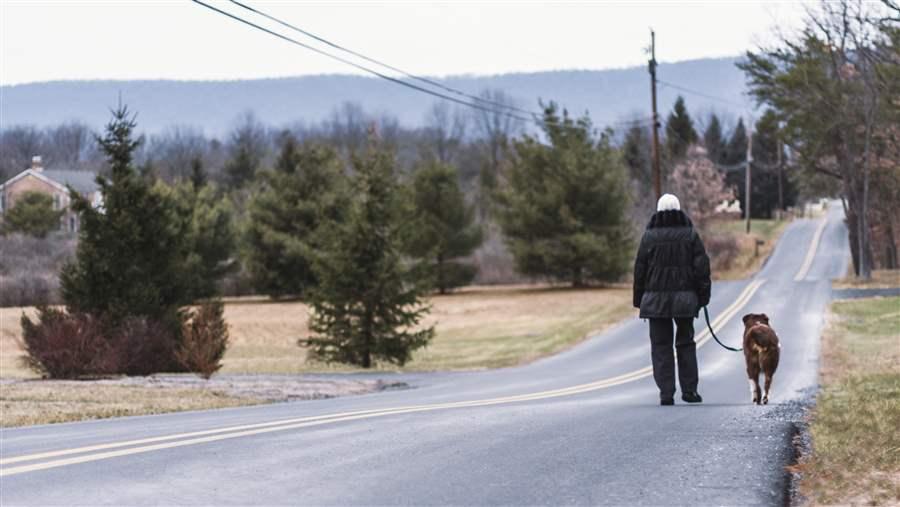Franken-Heitkamp Bill Holds Promise for Rural Areas Lacking Access to Quality Dental Care
Senate measure would fund training, loan forgiveness for dental therapists

Rural communities are in dire need of better and more accessible health and dental care.
© Holly Clark / Stocksy
Patients in rural areas face socio-economic, geographic, and workforce barriers when trying to access dental care. In many such areas, residents live far from dental care providers, tend to earn less than nonrural residents, and are less likely to have dental insurance.1
People living in rural communities also have higher rates of tooth decay and are less likely to visit a dentist than their counterparts in more urban communities.2 In spite of the need for more care, rural dental practices, like many health care facilities far from urban centers, struggle to recruit and retain a skilled workforce.3 These shortages mean that residents in those communities often have less access to care and longer wait times for appointments than do Americans in more populated areas.4 Rural residents with urgent dental needs, often seek care in the emergency rooms of critical-access hospitals, which are already overburdened and underfunded.5
The Health Resources and Services Administration, an agency within the Department of Health and Human Services, considers an area with more than 5,000 residents per dentist to be a dental health professional shortage area. As of November 2016, there were 5,433 such areas in the U.S., and 58 percent of them were in nonmetropolitan areas.6 Further, every state is expected to face a dental shortage over the next 10 years, according to the agency.
In an effort to help improve health care access for rural communities, Senators Al Franken (D-MN) and Heidi Heitkamp (D-ND) have introduced S. 3190, the Strengthening Our Rural Health Workforce Act of 2016.
The bill aims to lay the foundation for growing—and maintaining—a competent rural health workforce, including those providing oral health care, such as dental hygienists, assistants, and therapists.
The legislation would increase training and funding for physicians and mental health providers, and create new funding to encourage the growth of dental therapy in rural areas by, for example, making academic institutions eligible for grants to develop dental therapy training programs. Further, dental therapy students would be eligible for federal grants to subsidize tuition, as well as for loan forgiveness programs.
In 1977, when the U.S. faced a shortage of physicians, Congress passed the Rural Health Clinic Services Act, which allowed for federal reimbursement (through Medicaid and/or Medicare) of nurse practitioners and physician assistants who provided services without a physician on the premises. The goal was to maximize beneficial work by midlevel medical staff. Today, federally funded rural health clinics depend heavily on these midlevel providers, such as nurse practitioners and physician assistants.7
Federal lawmakers seeking strategies to expand oral health care access in rural communities should advance policies that encourage rural health clinics to add dental therapists to increase the availability of preventive and routine restorative care, such as filling cavities, placing temporary crowns, and extracting badly diseased or loose teeth.
In 2009, Minnesota became the first state to authorize dental therapy—in effect, giving permission for dental therapists to work in the state—and required that these providers practice in a health professional shortage area or otherwise serve low-income, uninsured, or underserved patients. With 64 licensed dental therapists working in Minnesota (as of April 2016), the program is serving the populations it was designed to assist: low-income, uninsured, and underserved; or those living in dental professional shortage areas.8 Forty-seven percent of dental therapists are serving patients outside the Twin Cities metro area, including in the rural reaches of the state.9 According to a 2014 Minnesota Department of Health report, private practice and clinic-based dentists who hired dental therapists saw a host of benefits, including increased numbers of underserved and Medicaid patients; increased dental team productivity; reduced clinic operating costs; and decreased travel and wait times for patients. During the period covered in the report, those care centers received no complaints about patient safety.10
Rural communities are in dire need of better and more accessible health and dental care.
By including dental therapists in S. 3190, Sens. Franken and Heitkamp are demonstrating a commitment to bringing that care to rural Americans.
Endnotes
- The Pew Charitable Trusts, “Improving Dental Care Access in Rural America,” last updated Nov. 19, 2015, http://www.pewtrusts.org/en/research-and-analysis/blogs/stateline/2015/11/18/improving-dental-care-access-in-rural-america.
- Susan Skillman et al., “The Challenge to Delivering Oral Health Services in Rural America,” Journal of Public Health Dentistry 70, no. s1 (2010): S49–S57, doi:10.1111/j.1752-7325.2010.00178.x.
- Health Resources and Services Administration, “Shortage Designation: Health Professional Shortage Areas & Medically Underserved Areas/Populations,” http://www.hrsa.gov/shortage/; Committee on the Future of Rural Health Care, Board of Health Care Services, Institute of Medicine. Quality Through Collaboration: The Future of Rural Health Care . Washington, DC : The National Academies Press ; 2005 : 1 - 18 .
- National Opinion Research Center at the University of Chicago, Walsh Center for Rural Health Analysis, “Promising Practices to Improve Access to Oral Health Care in Rural Communities” (February 2013), http://www.norc.org/PDFs/Walsh%20Center/Oral_Rural%20Evaluation%20Issue%20Brief-6pg_mm.pdf.
- Rural Health Research & Policy Centers, and NORC Walsh Center for Rural Health Analysis, “Use of Emergency Departments for Conditions Related to Poor Oral Health Care” (August 2010), http://www.norc.org/PDFs/publications/OralHealthFinal2.pdf.
- Health Resources and Services Administration, Designated Health Professional Shortage Statistics, accessed November 16, 2016, http://datawarehouse.hrsa.gov/topics/shortageAreas.aspx.
- National Rural Health Association, “Rural Health Clinics,” Policy Brief, April 2014 accessed at http://www.google.com/url?sa=t&rct=j&q=&esrc=s&source=web&cd=2&cad=rja&uact=8&ved=0ahUKEwjip6KL5a3QAhWky4MKHeu5DoQQFggiMAE&url=http%3A%2F%2Fwww.ruralhealthweb.org%2Findex.cfm%3Fobjectid%3DD64EF917-3048-651A-FEF9BAC415FD5BE7&usg=AFQjCNHPeTinUVlQ_JImu7QPPXpGoSRzcw.
- Minnesota Department of Health, Office of Rural Health and Primary Care, “Dental Therapy Toolkit” (April 2016), http://www.health.state.mn.us/divs/orhpc/workforce/emerging/toolkit/dtenv2016.pdf.
- Minnesota Department of Health, Office of Rural Health and Primary Care, “Minnesota’s Dental Therapist Workforce, 2015” (August 2016), http://www.health.state.mn.us/divs/orhpc/workforce/oral/2016dt.pdf.
- Minnesota Department of Health, Minnesota Board of Dentistry, “Report to the Minnesota Legislature 2014” (February 2014), https://mn.gov/boards/assets/2014DentalTherapistReport_tcm21-45970.pdf.
John Grant is the director for The Pew Charitable Trusts’ dental campaign.








